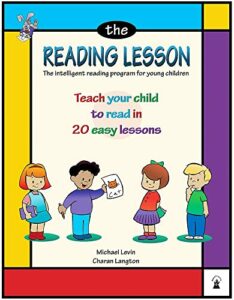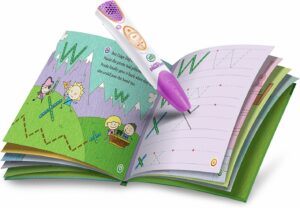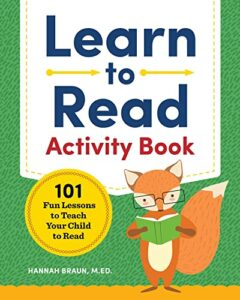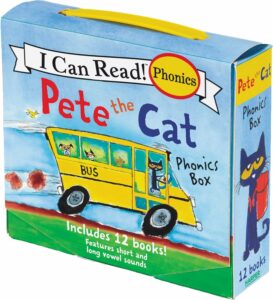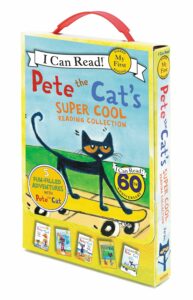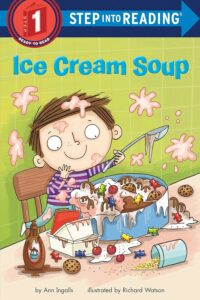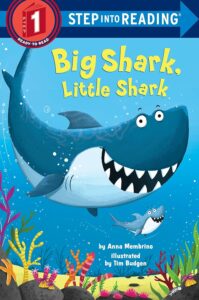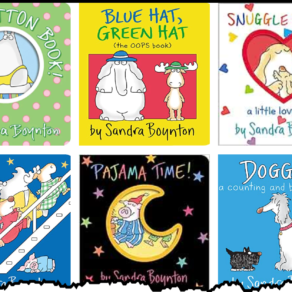Learn to read books is the topic of our post today!
As an educator and a former teacher, I have always held the belief that learning to read is a fundamental milestone in every child’s life. Not only does reading open up an infinite world of knowledge, imagination, and discovery, but it also provides a foundation for almost every other skill and area of education. This is a truth I have come to realize over many rewarding years of teaching and research.
However, in my journey as an educator, I’ve come to understand that not all books are created equal, especially when it comes to learning how to read. The process requires patience, a careful blend of fun, and meticulous educational strategies. This is where my role as a guide and mentor comes into play.

I have dedicated countless hours, poured over volumes of pedagogical research, and applied my rich teaching experience to carefully curate a list of the best learn-to-read books available. This selection isn’t just any off-the-shelf compilation. Instead, it’s a thoughtful assembly of resources that have garnered high ratings and outstanding reviews.
Each book on this list has been vetted for its unique approach, engaging content, and efficient educational methods—all necessary ingredients to make the learning process enjoyable and rewarding.
I invite you to explore this comprehensive list of learn to read books, where you’ll find each book is a stepping stone towards creating confident readers and lifelong learners. Whether your child is just beginning their reading journey or looking to enhance their literacy skills, there’s a book here to meet their needs.
Related: Best 20 Beginning Reader Books
Learn to read books
Here are our top picks for best learn to read books:
1.Thee Reading Lesson
This book is an exceptional guide for parents who want to teach their children to read. It incorporates a step-by-step methodology that unfolds over 20 lessons, gradually introducing new letters, words, and concepts. It is designed to stimulate the child’s intellect and interest, making reading a fun and accessible skill. This approach aids in the development of a strong foundation for the child’s future reading abilities.
2. Bob Books – Set 1, by Bobby Lynn Maslen
Bob Books – Set 1 is an innovative, phonics-based series that gently introduces children to the world of reading. The set includes 12 small, easy-to-read books, each containing a manageable number of unique words.
As children progress through the set, they will gradually learn the sounds of all the letters of the alphabet, helping them to build confidence in their reading abilities.
The illustrations are fun, non-distracting, and support comprehension. With a scientific foundation in phonics and reading, Bob Books have been successful in igniting a love for reading in millions of children around the world.
3. My First 1000 Words, by Wonder House Books
This book is a comprehensive visual dictionary for young learners. Filled with 1000 well-researched and attractively displayed photos, it introduces children to a wide array of topics and everyday objects, encouraging them to develop observational skills and build a robust vocabulary.
The content ranges from alphabets, numbers, shapes, colors, and opposites to various categories such as modes of transport, animals, professions, and body parts. This is an excellent resource to foster curiosity and word association in young minds.
4. LeapFrog LeapReader System
The LeapFrog LeapReader System is an interactive learning tool that uses a pen to help children sound out letters and words in interactive stories and activities. Each page of the included 10 books offers three modes that promote independent reading.
The LeapReader pen is compatible with all LeapReader books, offering a wide range of additional resources that can be accessed through the LeapFrog app. This system combines auditory and tactile learning, providing a comprehensive and engaging platform for children to enhance their reading skills.
5. Learn to Read Activity Book, by Hannah Braun
The Learn to Read Activity Book offers a complete plan to get children excited about reading. It incorporates 101 vibrant and engaging phonics exercises, such as coloring, mazes, and word searches.
As children progress through the activities, they gradually learn to recognize letters, sound out words, and eventually form sentences.
The book is a perfect blend of educational strategies and play-based learning, making it a fun and effective resource for parents and teachers. It also provides helpful guidance on how to support children through their learning journey, creating a beneficial and rewarding experience for all involved.
6. 200 Must Know Sight Words Activity Workbook, by Smart Kids Notebooks
This activity workbook is an engaging tool designed to boost your child’s reading and writing skills. It focuses on the top 200 most common sight words that are essential for kids to learn.
The book follows a progressive learning model, gradually increasing in difficulty to promote rapid learning. The engaging activities make the learning process enjoyable and effective.
With its convenient size and layout, you can easily select and teach words in any order you choose, offering a flexible and personalized learning experience.
7. Learn to Read for Kids with Dyslexia, by Hannah Braun M.Ed.
This book is a vital resource for helping children with dyslexia conquer the challenge of reading. Featuring over 100 colorful games and activities, it aims to strengthen auditory processing skills, improve letter formation in writing, and above all, make reading a joyful experience.
The workbook provides daily practice exercises focused on phonemic awareness, dysgraphia, and auditory processing disorder. With six different research-based learning methods, it offers a diverse range of strategies, allowing children to discover which approach works best for them. The games and exercises are not just educational, but also fun, fostering a love of reading and building children’s confidence in their abilities.
8. Learn to Read, by Modern Kid Press
A delightful journey into the world of words awaits children in this magical sight words and phonics activity book. The book employs an innovative method where children learn words through images, rather than phonetically sounding out letters. These sight words constitute a large proportion of most children’s books, making the learning of other words much more straightforward.
Additionally, it incorporates word recognition drills, puzzles, and games involving whimsical creatures like unicorns, mermaids, and dinosaurs, to ensure the learning process is engaging and fun. Its high-quality interior stock and premium matte cover design make it a durable and appealing educational resource.
9. Dr. Seuss Workbook, by Dr. Seuss
The Dr. Seuss Workbook is an all-encompassing 1st-grade workbook featuring over 300 curriculum-based activities. This educationally holistic approach covers English, Math, Social Emotional Learning, and Science.
Each exercise in the workbook incorporates familiar Dr. Seuss characters, making learning more fun and relatable for children. The lessons in this workbook are intended to fortify school teachings, ensure success in and out of the classroom, and cultivate essential life skills. Each completed activity is marked with reward stickers, and certificates are provided for each subject, fostering a sense of achievement and confidence in children.
10. School Zone – Beginning Reading Workbook, by School Zone, Joan Hoffman
This is an exceptional beginner reading comprehension workbook designed to support 1st and 2nd graders in developing fundamental reading skills such as word and sentence comprehension, vowel recognition, and vocabulary building. Through enjoyable reinforcement learning, it assists children in understanding reading and in developing their critical thinking and problem-solving skills.
Recognized for its educational excellence, School Zone’s content uses hand-writing to stimulate specific areas of a child’s brain, improving their memory and ability to innovate. The workbook’s layout and perforated pages make it easy to create individual worksheets, providing an excellent resource for school or home learning.
11. Learn to Read: Sight Words Storybook, by Kimberly Ann Kiedrowski
This book aims to help kids aged 3 to 5 start reading using simple stories and sight words. The storybook introduces 50 essential sight words in a progressive manner, gradually increasing in difficulty to enhance the learning process.
At the end of each story, there are a couple of fun activities to further reinforce the newly learned words. The book aims to give children a solid foundation for reading with common sight words and provides an enjoyable and interactive way for young children to learn to read.
12. 100 Words Kids Need to Read, by 1st Grade, by Scholastic
This workbook emphasizes the 100 words children should know by the time they reach the first grade. It helps them master comprehension, spelling, writing, and usage of each word through fill-in-the-blank stories and sentences, word riddles, games, and puzzles.
Stories present words in context, and “Guess the Word” activities challenge children’s comprehension. Children can also practice classifying and sorting words, using irregular verb forms, and proofreading. This comprehensive approach ensures children master essential words and develop crucial literacy skills.
13. Pete the Cat 12-Book Phonics Fun!, by James Dean and Kimberly Dean
Dive into early reading with “Pete the Cat 12-Book Phonics Fun!”, where Pete the Cat turns learning into a groovy adventure. This set, reviewed by a phonics expert, contains 12 colorful books that focus on short and long vowel sounds, blending these with common sight words to craft engaging stories for young readers. Ideal for children ages 3 to 6, these mini-books are not just about reading but mastering the sounds that form the foundation of literacy.
14. First Little Readers Parent Pack, by Deborah Schecter
“First Little Readers Parent Pack: Guided Reading Level A” by Deborah Schecter is a delightful collection tailored for children at the very start of their reading journey. With 25 books, each sporting simple, repetitive text, this pack is designed to build confidence and ease in new readers. It also includes a helpful guide for parents to assist their little ones, making it an invaluable resource for PreK-2 educators and families.
15. Biscuit Goes to School, by Alyssa Satin Capucilli
Join the lovable pup in “Biscuit Goes to School” by Alyssa Satin Capucilli. This charming story follows Biscuit’s excitement and determination to experience a day at school, even though dogs aren’t allowed. Perfect for children preparing for preschool to first grade, this book uses simple language, repetition, and engaging illustrations to support emerging readers in their literacy journey.
16. Teach Your Child to Read in 100 Easy Lessons, by Siegfried Engelmann, Phyllis Haddox, and Elaine Bruner
“Teach Your Child to Read in 100 Easy Lessons” by Siegfried Engelmann, Phyllis Haddox, and Elaine Bruner is a transformative, phonics-based guide for parents. This step-by-step method promises to unlock the world of reading for children within just 20 minutes a day, offering a structured approach that’s proven to be effective. With its revised and updated edition, it continues to be a trusted resource for teaching essential reading skills.
17. Sight Word Readers Parent Pack, by Scholastic
The “Sight Word Readers Parent Pack” from Scholastic is an essential toolkit for early literacy, focusing on the first 50 sight words that form the building blocks of reading. This set includes 25 little books filled with engaging stories that young readers can navigate independently, bolstering both their skills and confidence. The pack also features activities and practice pages to reinforce learning in an enjoyable way.
18. Dancing Dinos Go to School, by Sally Lucas
“Dancing Dinos Go to School” by Sally Lucas is a rhythmic and joyous Step 1 reader that brings dinosaurs into the classroom to engage young readers with their delightful antics. With big type, easy words, and vibrant illustrations, children who are just starting to recognize letters and words will find this book both accessible and entertaining, making the transition into reading as exciting as a classroom full of dancing dinos.
19. The Bad Seed Goes to the Library, by Jory John
“The Bad Seed Goes to the Library” by Jory John brings the Bad Seed into a new light, where his love for reading is tested by the rules of borrowing and returning books. This Level One I Can Read book is perfect for children beginning to navigate the world of words and sentences, teaching them about sharing and the public library system. It’s an engaging tale that encourages a love for reading and the importance of community resources.
20. I Want to Be a Doctor, by Laura Driscoll
“I Want to Be a Doctor” by Laura Driscoll offers a glimpse into the world of medical professionals for children who dream of a future in healing others. This story merges a narrative with educational facts, introducing young readers to various types of doctors through the eyes of a family visiting the hospital. It’s a Level One I Can Read book, ideal for early readers to learn about community helpers and the value they bring to our lives.
21. Pete the Cat’s Super Cool Reading Collection, by James Dean and Kimberly Dean
“Pete the Cat’s Super Cool Reading Collection” by James Dean and Kimberly Dean bundles together five engaging stories from the beloved blue cat. This collection is an excellent addition to the My First I Can Read series, providing emerging readers with stories that are as entertaining as they are educational. Pete the Cat’s adventures are sure to captivate children and nurture their budding reading skills.
22. Ice Cream Soup, by Ann Ingalls
“Ice Cream Soup” by Ann Ingalls is a delightful addition to the Penguin Young Readers, Level 1 series that serves up a sweet tale of culinary mishap. Children who are just beginning to recognize letters and understand words will relish the rhythmic, rhyming text as they follow the adventure of turning an ice cream cake into a soupy treat. It’s a perfect recipe for engaging young minds in reading through a fun and familiar topic—everyone’s favorite dessert, ice cream!
23. Big Shark, Little Shark, by Anna Membrino
“Big Shark, Little Shark” by Anna Membrino is a playful exploration of opposites, featuring two sharks with very different attributes. This Step into Reading book captures the underwater adventures of these contrasting characters as they search for something to satisfy their hunger. With big type, easy words, and rhyming text, it’s an engaging story for children at the start of their reading journey, helping them decode text with visual and contextual clues.
Final thoughts
As we close the pages on this collection of learn to read books, it’s evident that each story offers more than just simple sentences and engaging illustrations; they present a unique opportunity for young minds to step into the vast world of words. From the groovy beats of Pete the Cat’s reading adventures to the contrasting sizes of sharks in the deep blue, these books are gateways to literacy.
They are are also companions for children as they embark on the lifelong journey of reading. Whether it’s through the whimsical rhymes of “Ice Cream Soup” or the aquatic escapades of “Big Shark, Little Shark,” each book invites young readers to discover the joys of reading, one page at a time. As educators, parents, or simply champions of literacy, our role is to guide these budding readers through these early steps, fostering a love for reading that will enrich their lives for years to come.



